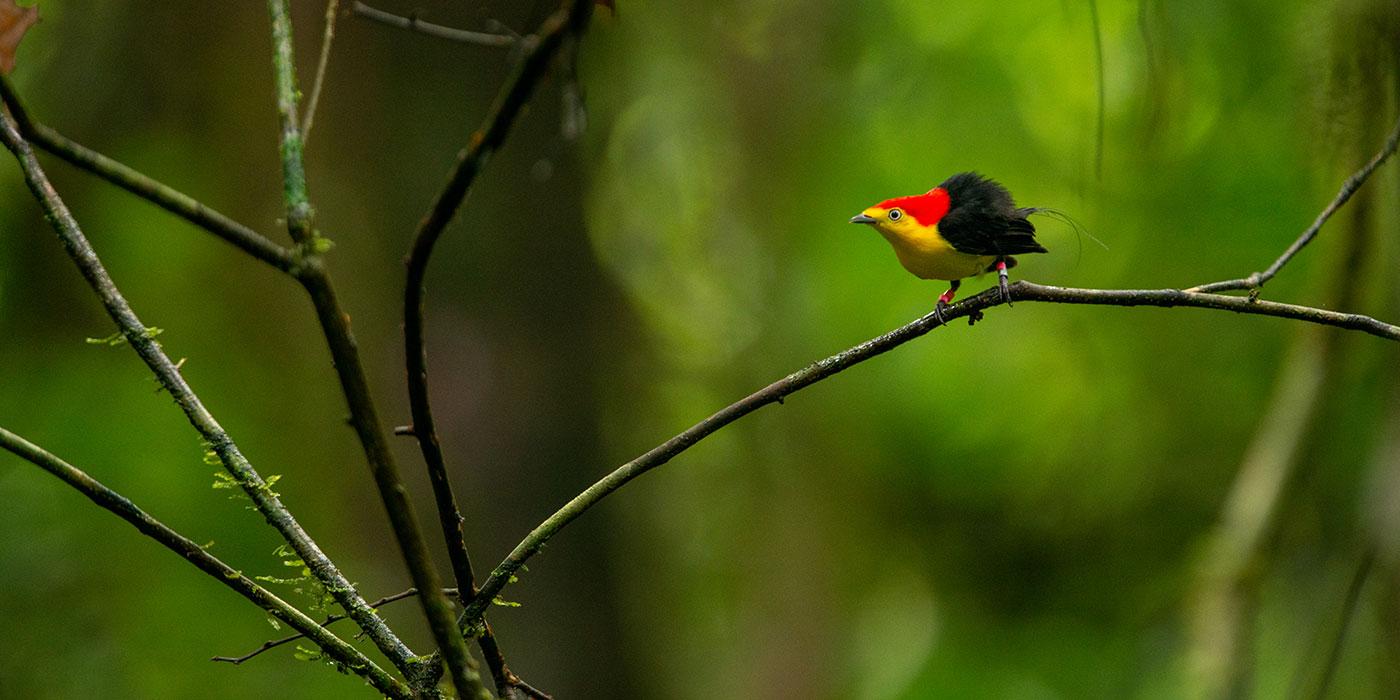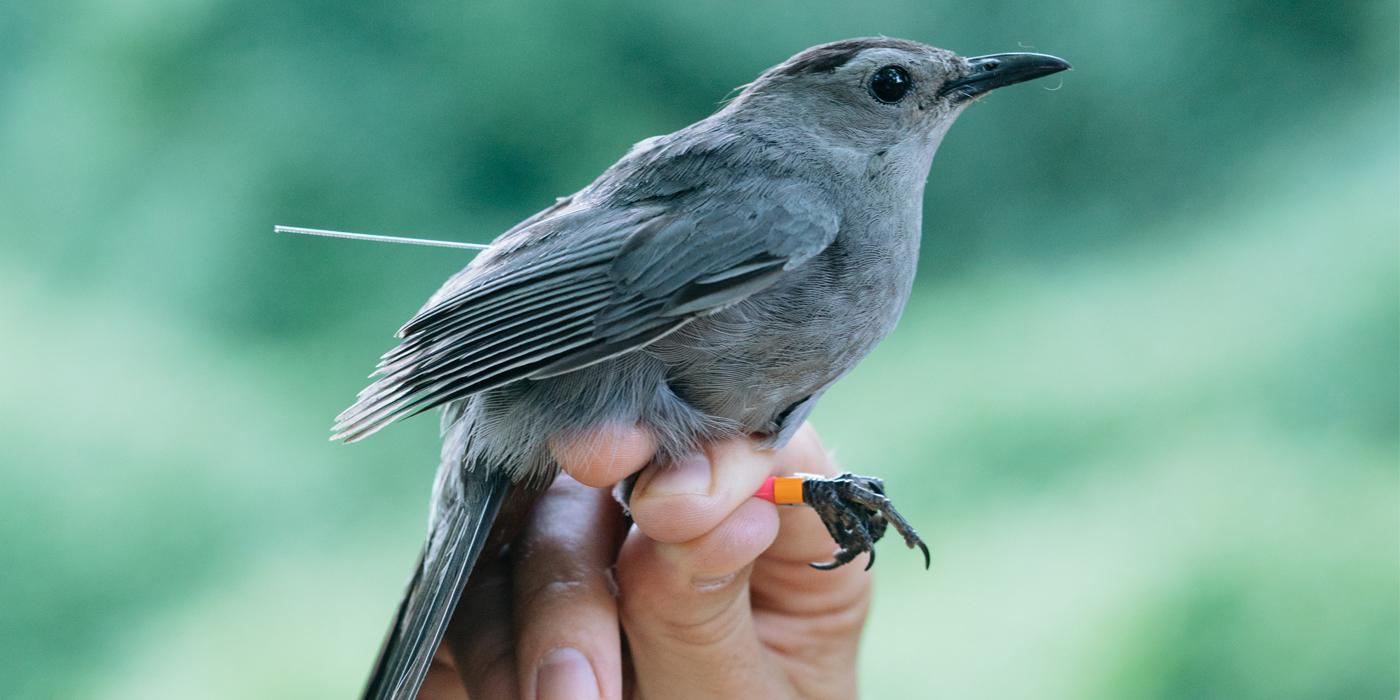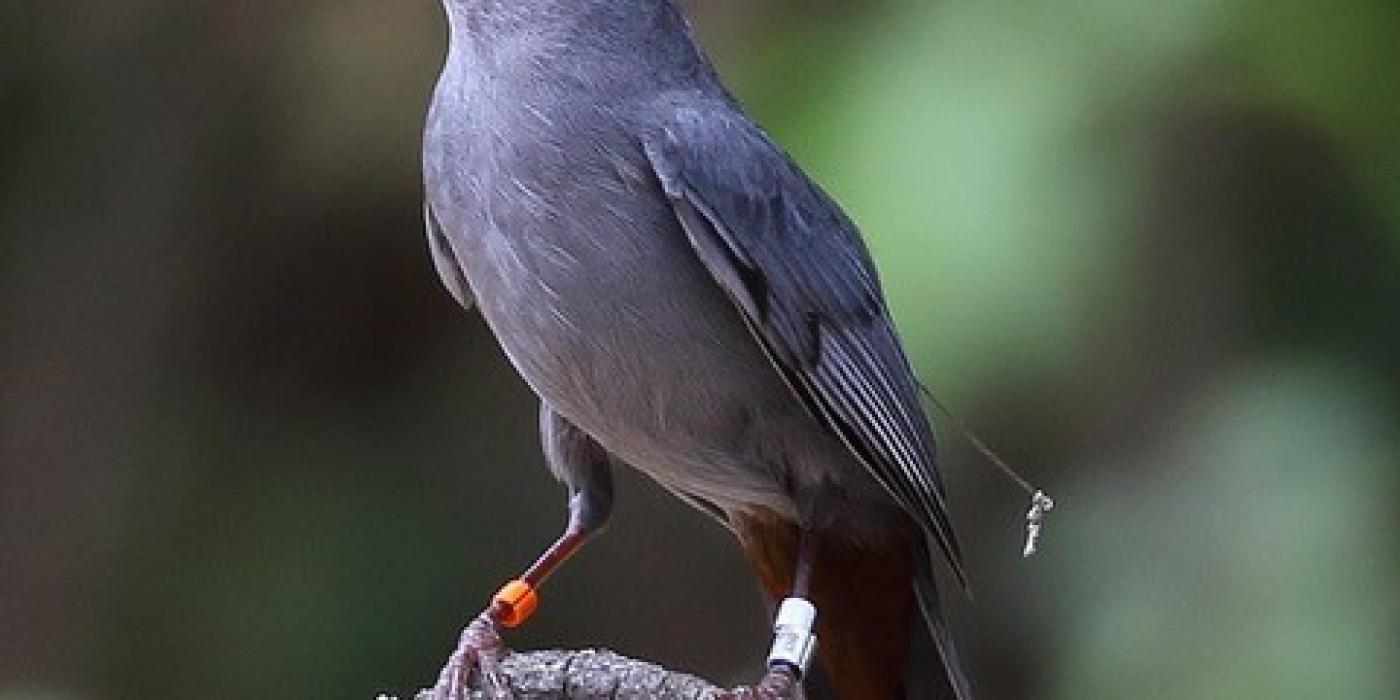Gray Catbird Expedition Blog
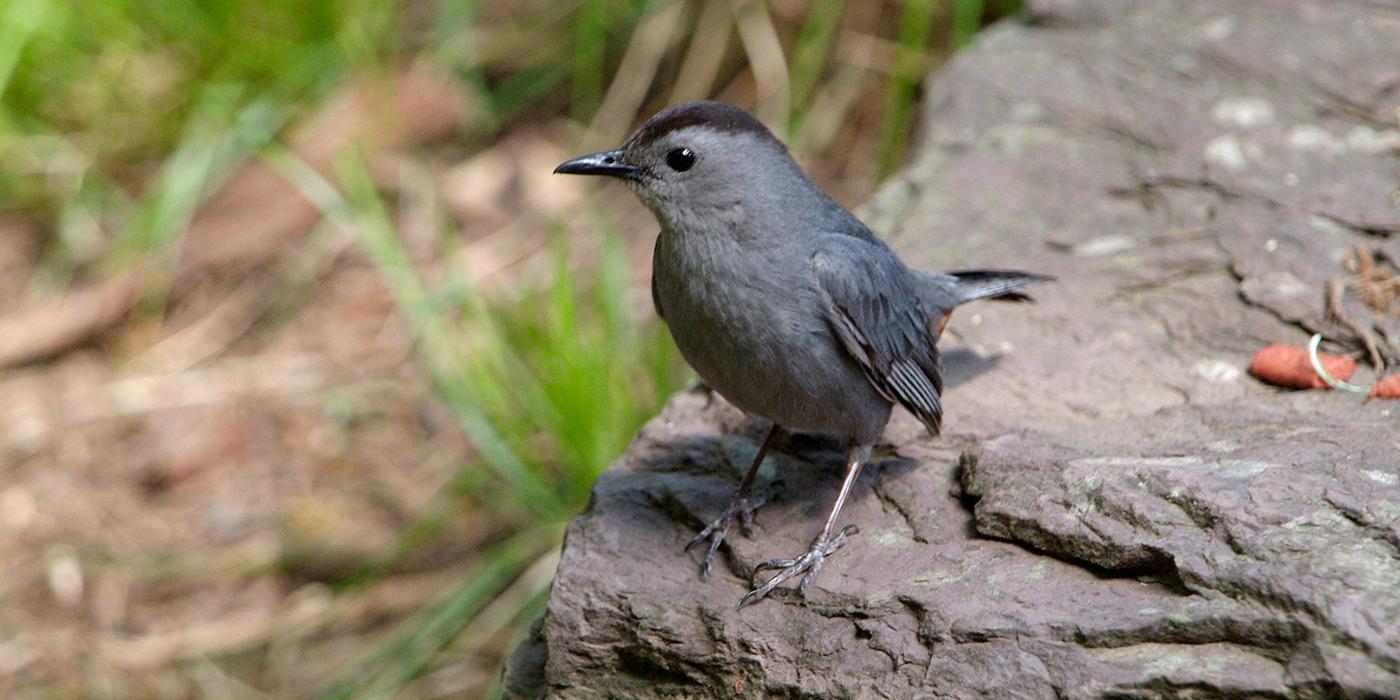
Gray Catbirds in Colorado
When people think of Colorado lots of images come to mind…Rocky Mountains, John Denver…maybe a bucking bronco. When I think of Colorado the thing that comes to mind are catbirds.

Gray catbird habitat in Colorado.
Back east catbirds are in our yards and gardens. Here in Colorado they are a species of the wild lands…occupying the riparian ravines and thick shrubs.
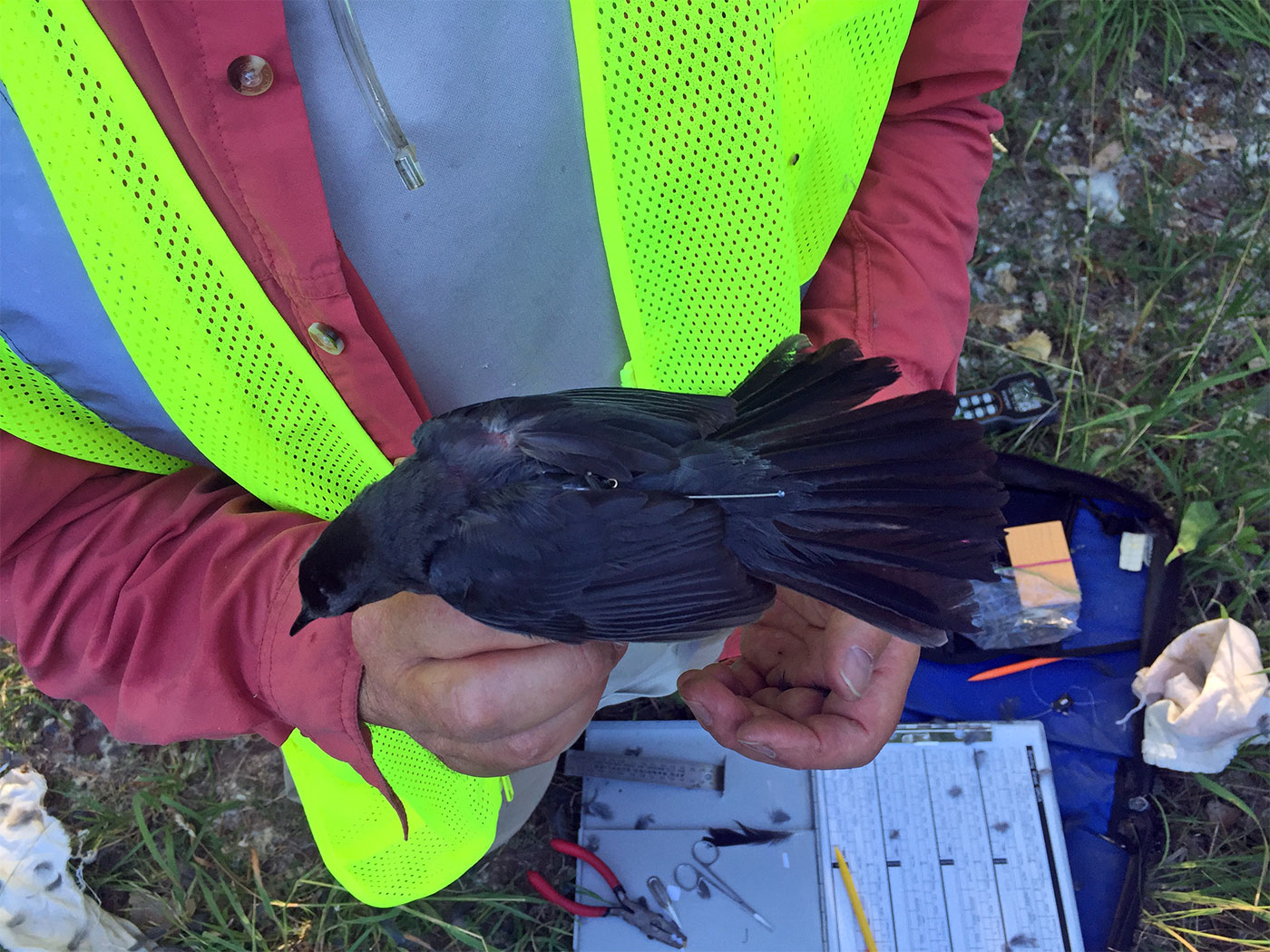
Gray catbird with transmitter attached to its back. Photo by Anne Perrault
What will be interesting is whether these wild land birds are in wild lands on the wintering grounds.
Stay tuned for the recovery of these birds next year and the download of the tracking data.
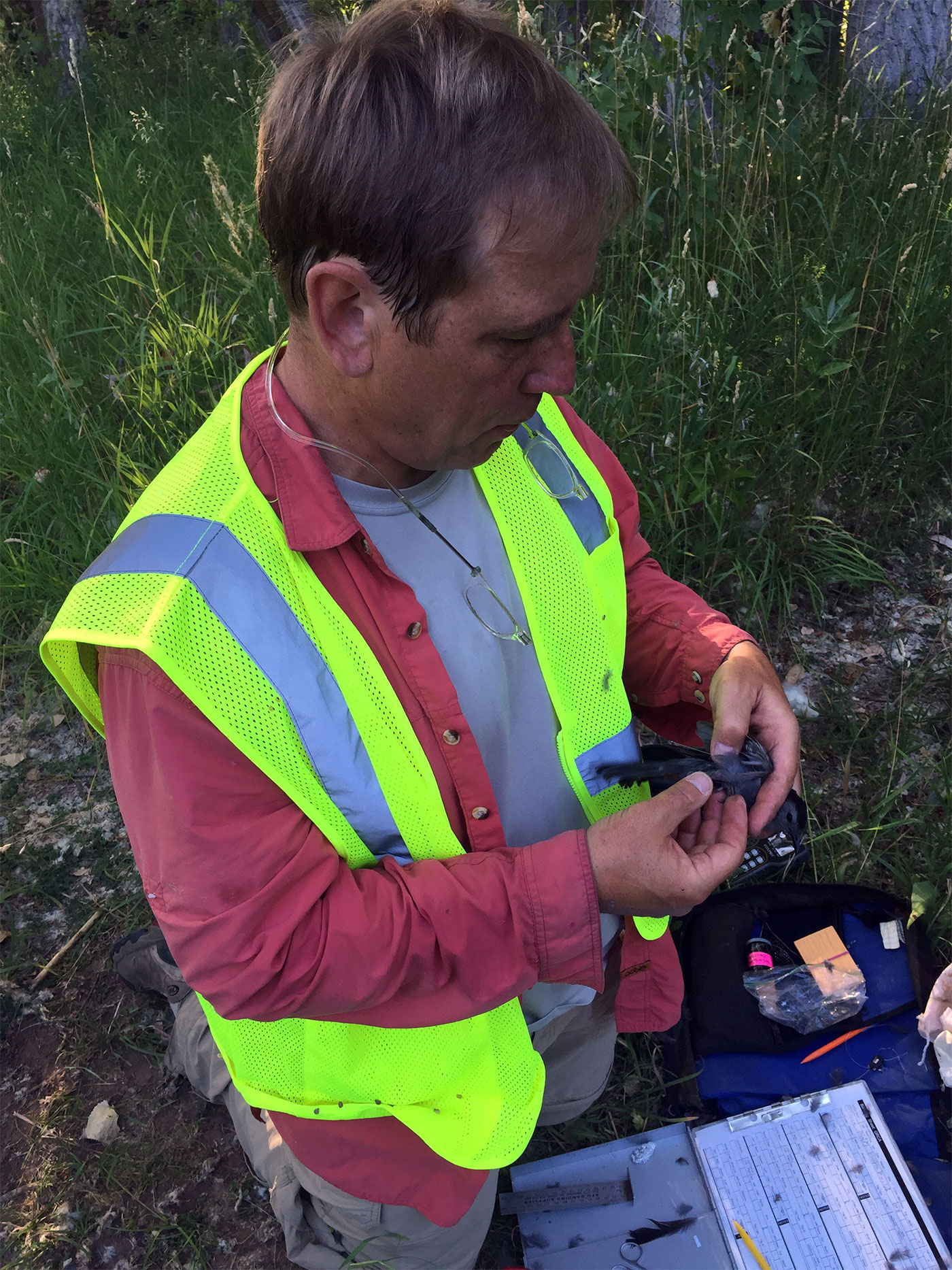
Smithsonian Migratory Bird Center director Pete Marra with a gray catbird. Photo by Anne Perrault
Gray Catbird Study Begins
This summer the Smithsonian Migratory Bird Center is starting a new tracking project looking at the migratory connectivity of gray catbirds.
This exciting project takes a range-wide approach by tagging nearly 100 gray catbirds across their breeding range in Washington D.C., Atlanta GA, Springfield MA and Fort Collins CO.
Specifically, we will be tagging catbirds with 1 gram archival GPS tags that can take 80 points at 10 meter resolution.
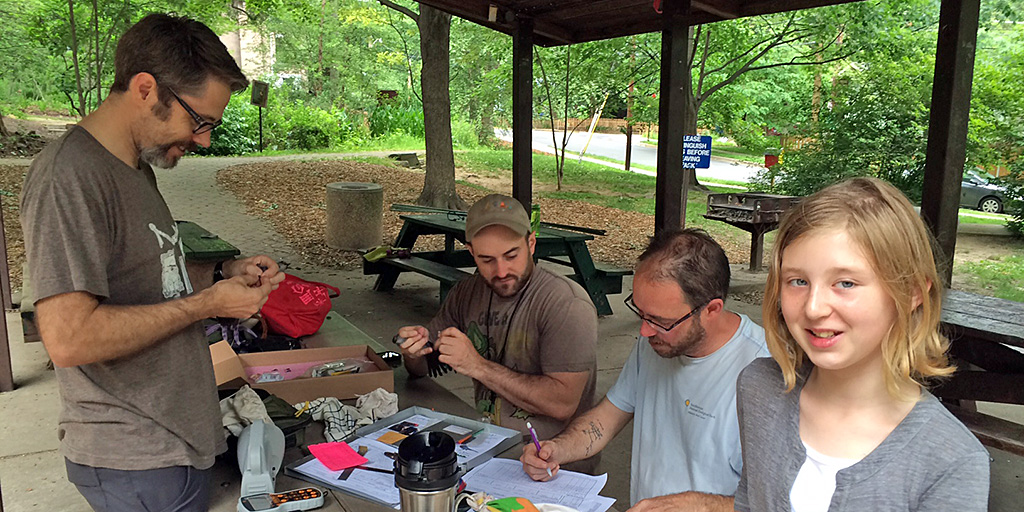
Gray catbird banding site
By tracking birds across their breeding range, we can look at how breeding populations are connected with non-breeding locations that span from Florida to the Caribbean and Central America.
A catbird wintering in Florida is likely to experience vastly different environmental conditions than one that winters in Guatemala.
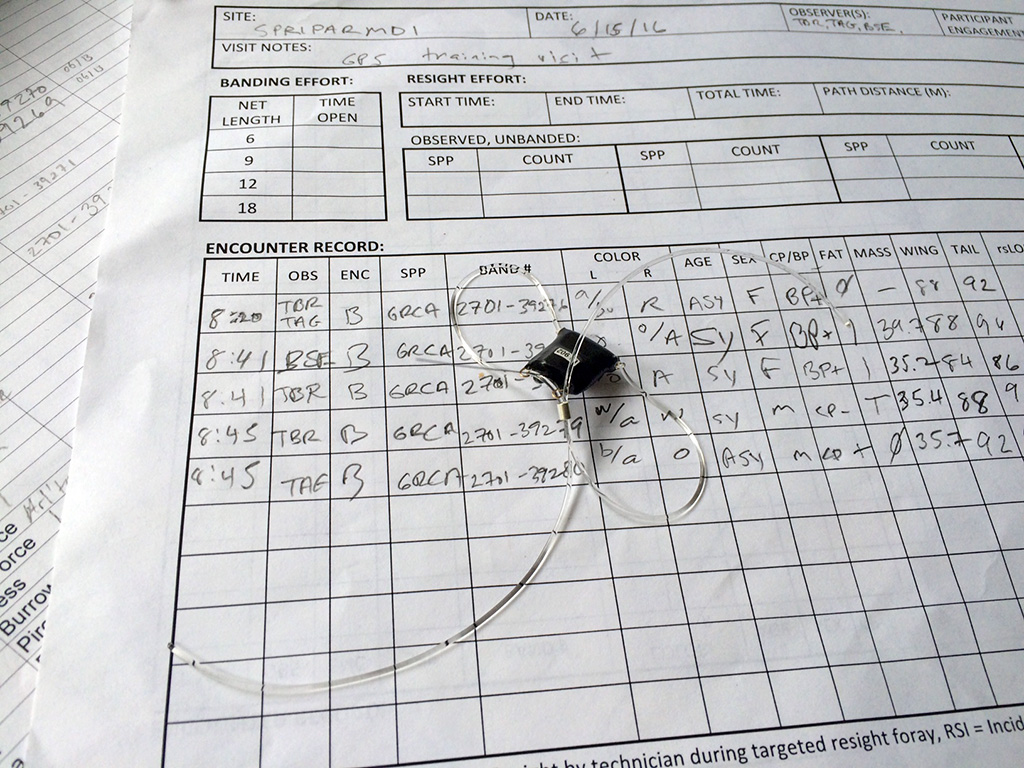
The GPS tracking device
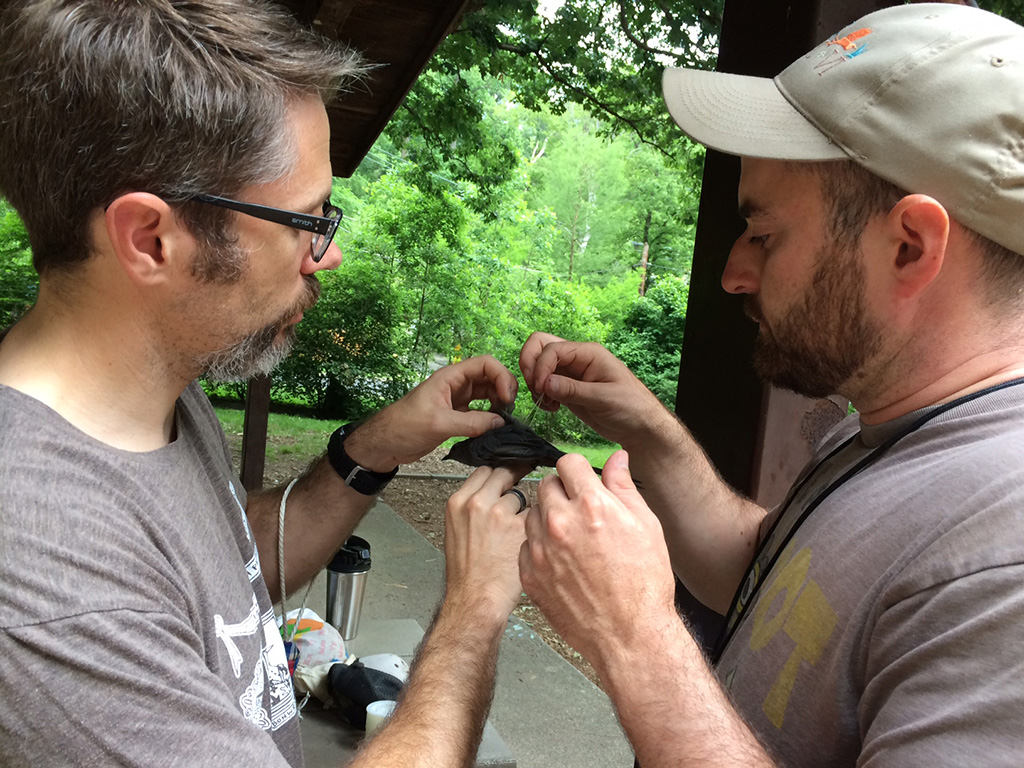
Attaching the tracking device to a gray catbird
By tracking birds across their range and throughout the annual cycle, we can begin to understand how conditions during the non-breeding season impact departure timing, the speed of migration, and arrival for the next breeding season.
Documenting how environmental variation across the non-breeding range "carrys-over" to influence breeding success has never been done before.
We look forward to updating everyone as the data begin to roll in next summer!
